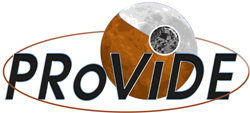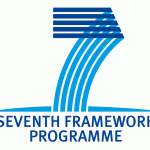 The campus of the Technische Universtät Berlin is located in the center of Berlin. The university with its 7 faculties and 47 institutes focuses on achieving four sharply-defined core goals: building a distinctive profile for our university, ensuring exceptional performance in research and teaching, providing our graduates with excellent qualifications, in addition to a forward-looking approach to efficient university governance. Strong regional, national and international networking with partners in science and industry is an important aspect in all endeavors of the university.
The campus of the Technische Universtät Berlin is located in the center of Berlin. The university with its 7 faculties and 47 institutes focuses on achieving four sharply-defined core goals: building a distinctive profile for our university, ensuring exceptional performance in research and teaching, providing our graduates with excellent qualifications, in addition to a forward-looking approach to efficient university governance. Strong regional, national and international networking with partners in science and industry is an important aspect in all endeavors of the university.
319 professors and 2130 research staff attend to approximately 28,250 (20% foreign) students that are currently enrolled at the university. At the Technische Universtät Berlin on average 25 habilitations and 420 doctoral degrees are received each year.
The Department of Geodesy and Geoinformation Sciences is part of the faculty IV – Planning – Building – Environment – and offers an international masters course. Students can choose to recess their knowledge in the fields of
- Methods of Geoinformation Science,
- Engineering Surveying and Adjustment Techniques,
- Precission Navigation and – Positioning,
- Satellite Geodesy and Earth System Science, and
- Planetary Geodesy.
The PRoVisG group at Technische Universtät Berlin will process a representative part of the US Mars Exploration Rover (MER) imagery to generate 2D and 3D data products such as Digital Terrain Models (DTMs), panoramic greyscale, colour and multispectral mosaics, range maps and a set of representative scientifically relevant results. Rover and aerobot mock-up equipment available at some of the other involved participants will be used to verify and demonstrate the processing of data which should be a great work experience for the currently envisaged ESA rover missions ExoMars.
These demonstrations will be performed within testbed tests and a field test campaign. A summer school to be organized at the Technische Universtät Berlin is attached to this final test in July or August of 2011.
Key Personnel
Prof. Dr. Jürgen Oberst
Jürgen Oberst (Ph.D.: The University of Texas, 1989) is a faculty member of the Technical University Institute of Geodesy and Geoinformation Science as well as head of the Planetary Geodesy Department of the DLR Institute of Planetary Research. He is involved as Co-Investigator in camera or Laser ranging experiments on various planetary missions (e.g. mars Express, MESSENGER, LRO). In 1997, he was team member associate for Mars Pathfinder, and he is currently Co-Investigator for the PanCam experiment on ExoMars. He is member of the IAU/IAG working group on Coordinates and Rotational Elements of the Planets and Satellites, as well as Chairman of the ISPRS (International Society of Photogrammetry and Cartography) IV/7 Working Group on Extraterrestrial Mapping. Recently, L. Oberst has obtained a grant from the Ministry for Education and Science of the Russian Federation for development of the “Extraterrestrial Laboratory” at MIIGAIK (Moscow State University for Geodesy and Cartography). Beeing a frequent visitor to Moscow, he will help coordinate the activities between MIIGAIK and other partners of the project.
Dr. Konrad Willner
Konrad Willner (Ph.D.: TU Berlin, 2009) was involved in the photogrammetric analysis of Mars Pathfinder image data between 2000 and 2001. He then was concerned with studies in the Geodesy and Cartography of Phobos on the basis of Viking, and Mars Express HRSC / SRC image data. He has profound knowledge in various planetary geodesy applications, in particular photogrammetric techniques. His role will be in the management of the TUB Task, he changed to DLR in Summer 2014.
Dipl.-Ing. Isabel Haase
Isabel Haase received her diploma in Geodesy at TU Berlin, specializing in photogrammetric processing of planetary image data (working with Mars Express HRSC data). She graduated in 2007. Since May 2009 she has been working as a Ph.D. student at the Chair of Planetary Geodesy, Department of Geodesy and Geoinformation Science of TU Berlin, evaluation landing sites of the Apollo missions based on Lunar Reconnaissance Orbiter data and Astronaut photographies.
Hartmut Lehmann
Hartmut Lehmann is a cartographic engineer who received his diploma from the University of Applied Science in Berlin. Since 1988 he specialized in digital cartography and generation of image maps. He was involved in the generation of topographic and thematic maps from planet Mars. In recent years he significantly contributed to the design of the new map series “Topographic Image Map Mars 1:200,000”. He is co-author of several papers on planetary mapping topics.


